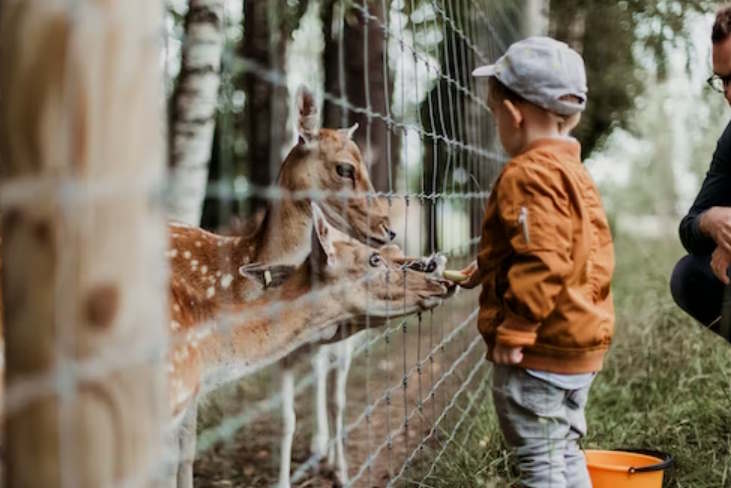As parents, we always want the best for our kids, and providing them with educational opportunities is no exception. We aim to allow our children to learn new things and grow as individuals. Learning about various animal habitats worldwide offers exciting learning experiences that can blur the lines between science, geography, nature, and even art. If you’re looking for ways to engage your child creatively while exploring different animal habitats actively, then look at these resources below – they will certainly add some color (and education) into their tutoring routine.

Introducing Kids to Animal Habitats – An Overview of Age-Appropriate Resources
Introducing young kids to the concept of animal habitats is a great way to get them excited about environmental and animal conservation issues. Age-appropriate resources are available to help them learn more about the ecosystems that support and sustain animals, such as books for younger readers, videos and movies with educational engagement, and virtual field trips, which provide an immersive experience designed specifically for kids.
Parents can also seek out free activities on websites that offer opportunities to discover more about animals’ natural habitats. These animal habitat teaching resources for kids will bring the worlds of science and nature to life while they explore amazing creatures who live on land, swim in seas, or soar in the sky. The resources provide kids with interactive and entertaining experiences to simultaneously develop their creative and scientific skills.
Exploring the Versatile World of Nature Documentaries
Nature documentaries can be an eye-opening experience for kids of all ages. They offer a unique opportunity to tour around the globe and explore its diverse regions, from North Africa’s deserts to the Amazon’s rainforests. Kids can learn about the variety of animal habitats, their unique behavior, and their special adaptations that help them survive in their environment. Watching nature documentaries helps bring some of these environments closer, allowing viewers to appreciate nature’s fragile wonders in all its diversity.
Furthermore, these films continue to inspire young viewers with wondrous stories that evoke curiosity and appreciation towards our planet. With so many options available today, there’s no better way to spark an enthusiasm for exploration and knowledge than watching nature documentaries with kids.
Virtual Tours and Educational Games
Learning about animal habitats can be fun for kids, thanks to the implementation of virtual tours and educational games. With these tools, children can gain an appreciation for the wide array of environments animals call home, from deserts to rainforests to the open ocean. They get a closer look at these different habitats and learn facts surrounding them, and it also allows them to get creative.
As they explore various worlds, they have free rein to imagine what life could be like if they visited or even lived there – it takes their education to a whole new imaginative level. Unsurprisingly, this interactive form of learning makes a lasting impression on young minds: it allows them to explore their natural connections in a unique and exciting way while simultaneously stimulating critical thinking skills.
Hands-On Activities for Helping Kids Learn About Animal Habits and Behaviors
Schools and parents alike have long searched for engaging activities that help children learn more about the habits and behaviors of animals. Hands-on activities are invaluable in assisting kids in developing a richer understanding of the animal world—from the food they eat to where they live and their unique ways of working together as a species. Teaching kids about the habitats of animals is a great way to introduce further knowledge about these wildlife communities.

Engaging children in activities such as building birdhouses, constructing terrariums with lizards or frogs, or charting insects’ natural habitats can give them deeper insight into how animals live and interact. Exploring different animal habitats can also help children appreciate how ecology, sustainability, and stewardship play roles in conservation efforts.
Teaching Kids How to Analyze Animals in Their Natural Habitats
Teaching kids how to analyze animals in their natural habitats can be fun and educational. Start by taking your little one to an animal sanctuary or a wildlife refuge so that they can observe the behavior of animals in their natural environment. Then introduce them to more creative activities such as going on a nature outing, where you can teach them about the layers of an ecosystem, from plants and weeds in the ground to insects and birds in the air.
As your child becomes familiar with these things, you can encourage them to observe, describe and document the aspects of animal habitats around them – from different kinds of trees that provide food for particular species to movements made by animals during specific times. By engaging children in a play-based approach, you not only help facilitate learning but also allow them to feel connected to our global environment.
Encouraging Stewardship Through Discussion and Actionable Ideas
The goal of encouraging stewardship in children should start early by fostering conversations about the environment, its citizens (both human and animal), and how to conserve it. We can begin these discussions by introducing kids to local animal habitats – taking them hiking in the woods, attending a wildlife sanctuary, or having a picnic at a nearby park. Empowering them with knowledge is essential to their personal development while teaching them invaluable conservation and protection lessons.
These hands-on experiences will give kids the first taste of how easy and enjoyable it is to protect nature while still being able to bask in its beauty. From there, more actionable ideas can come into play, whether picking up garbage on a beach or starting backyard composting projects in their neighborhoods. By engaging with our littlest learners through dialogue and tangible activities, we can help create better futures for the ongoing preservation of our earth.
The sky’s the limit when introducing kids to the fascinating world of animal habitats. As our planet continues to change, there is no better time than now to ensure our youngest generations understand how and why animal habits, behaviors, and ecosystems are critical for humans and all living things. Understanding animal habitats will mean understanding more about nature and its inhabitants and unlocking greater insight into ourselves, furthering our collective quest for a truly holistic knowledge of the natural world.





